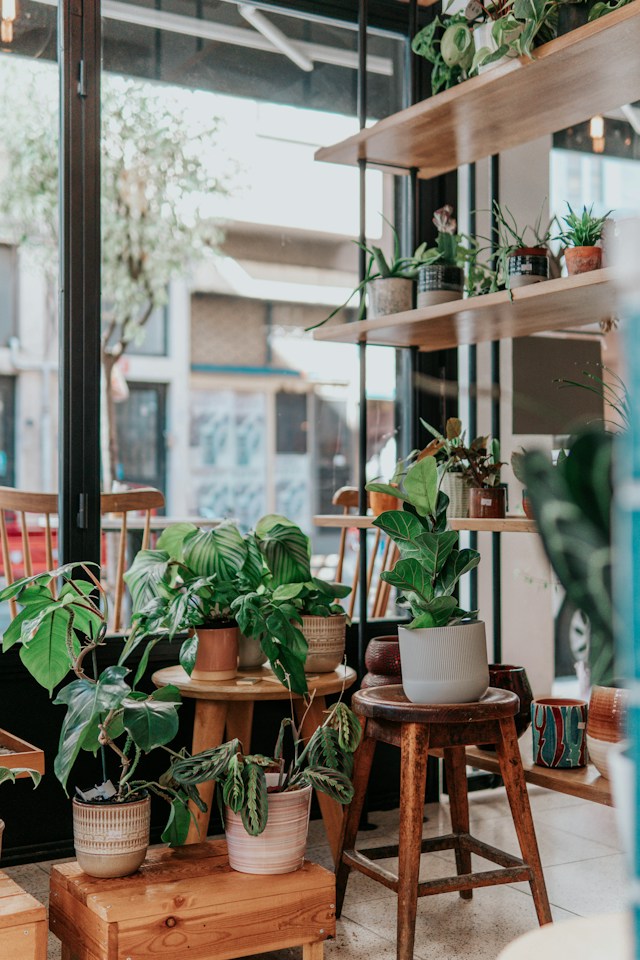In an era where conventionally grown produce is the norm, heirloom gardening offers a unique alternative, providing you with a wealth of diverse and rare plant varieties. This form of gardening goes beyond mere hobby; it’s a lifestyle that can vastly enhance the health, taste, and diversity of your garden, while contributing to the preservation of genetic diversity in our agricultural systems. The world of heirlooms is teeming with vibrant colors, unusual shapes, and incredible tastes. From crimson carrots to purple tomatoes, the variety is endless and exciting.
What are Heirloom Seeds and Why Do They Matter?
Heirloom seeds are the seeds of plant varieties that have been passed down through generations of growers. Unlike hybrid seeds, which are bred for specific traits such as disease resistance or uniformity, heirlooms are open-pollinated and retain their traits naturally, year after year.
Lire également : Home workout spaces: designing for fitness and wellness
Using heirloom seeds is akin to living history. These seeds often carry a legacy, having been saved and passed down from generation to generation. They offer a unique connection to our agricultural heritage, a link that is increasingly rare in modern times.
Heirloom seeds are important for numerous reasons. Diversity is a key strength in any ecosystem, and growing various heirlooms contributes to a healthy, vibrant garden. Moreover, heirloom seeds help preserve genetic diversity in our food systems, which is a crucial line of defense against pests, diseases and changing climate conditions.
A lire également : Home cocktail crafting: setting up your own bar
Growing Heirlooms: A Time-Tested Art
Growing heirlooms is not markedly different from growing conventional varieties. However, there are a few aspects that require particular attention. The first consideration is timing. Heirlooms, especially tomatoes, often take longer to mature than their hybrid counterparts. Therefore, it’s important to plan your garden well in advance.
Another aspect to consider is that heirloom plants often require more attention and care compared to their modern counterparts. Heirloom tomatoes, for instance, are more susceptible to diseases and pests. However, the superior taste and uniqueness of these tomatoes make the extra effort worthwhile.
Growing heirlooms also allows for seed saving. This age-old practice not only saves you money, but also contributes to the preservation of these unique varieties. Saving seeds is an easy process. For most plants, all you need to do is let a few of your best specimens go to seed, then collect, dry, and store the seeds for next year.
The Allure of Purple Tomatoes
One of the most exciting aspects of heirloom gardening is the chance to grow unusual and rare varieties, such as purple tomatoes. These are not your typical grocery store tomatoes. They come in various shades of purple, from light lavender to deep indigo, and offer a rich, complex flavor that is often described as a blend of sweet and tart.
Purple tomatoes are not just eye-catching; they are also packed with anthocyanins, the same antioxidants found in blueberries and blackberries. These antioxidants are believed to have numerous health benefits, including anti-inflammatory and anti-cancer properties.
Growing purple tomatoes is similar to growing other tomato varieties. You can start the seeds indoors about six to eight weeks before the last spring frost, then transplant the seedlings outdoors once the danger of frost has passed.
Heirlooms and Farmers: A Synergistic Relationship
Farmers play a crucial role in preserving heirloom varieties. Firstly, they act as stewards of these unique seeds, growing them year after year and saving the seeds for future generations. Secondly, they help increase the popularity and availability of heirlooms by selling the produce at farmers’ markets and other retail outlets.
Heirloom produce often fetches a higher price in the market compared to conventional produce, which makes it an attractive option for farmers. Additionally, the unique taste and appearance of heirloom fruits and vegetables can help farmers stand out in the market.
Preserving Heirloom Seeds for Future Generations
Preserving heirloom seeds is a vital part of heirloom gardening. By saving and sharing these seeds, you are playing an active role in preserving agricultural biodiversity and our cultural heritage.
Seed saving is a simple yet rewarding process. It involves selecting the best specimens from your garden, letting them go to seed, and then collecting, drying, and storing the seeds. Properly stored seeds can last for many years, and each subsequent generation of plants will adapt further to your specific garden conditions.
Seed sharing is another important aspect. By sharing seeds with your fellow gardeners, local seed libraries or seed exchanges, you are helping to widen the distribution of these rare varieties and thus increase their chance of survival.
Preserving heirloom seeds is not just about maintaining diversity or nostalgia. It’s about ensuring a resilient, healthy, and sustainable food system for future generations.
How to Successfully Start and Grow Your Own Heirloom Garden
Starting your own heirloom garden might seem daunting, but it’s a rewarding endeavor that can yield a bounty of delightful, rare produce. Beyond the satisfaction of growing your own food, you’re also contributing to the preservation of genetic diversity and supporting sustainable agriculture.
First off, you’ll need to get your hands on some heirloom seeds. There are a myriad of reputable seed companies like Baker Creek, Seed Savers Exchange, and others that specialize in heirloom varieties. It’s essential to choose varieties that are suitable for your growing region and conditions.
Seed starting typically begins indoors six to eight weeks before the last expected frost. This gives the seedlings a head-start and ensures they’ll be strong and ready to transplant once the warmer weather arrives. You’ll need a seed starting mix, pots or trays, and a warm, sunny spot for your seeds to germinate and grow.
When it’s time to transplant, make sure your heirloom plants are placed in a spot with full sun. Most vegetables, including heirloom tomatoes like the Cherokee Purple, need at least six to eight hours of sunlight per day to thrive. Additionally, ensure your plants have ample space to grow, as overcrowding can lead to disease and pest issues.
Keep in mind that many heirloom varieties can be more susceptible to diseases and pests. To mitigate this, integrate pest-resistant plants into your garden and rotate crops each year to prevent the buildup of diseases.
The Role of Plant Breeders and Savers Exchange in Preserving Heirloom Seeds
Plant breeders and savers exchange play a significant role in the preservation of heirloom seeds. Plant breeders are responsible for maintaining the genetic diversity of plants by selecting and breeding certain varieties for specific traits. This process ensures that heirloom varieties continue to exist, even as commercial agriculture focuses on uniform, hybrid crops.
The Savers Exchange, on the other hand, is a network of dedicated gardeners committed to preserving and sharing heirloom seeds. These seed savers collect, save, and exchange seeds from their best plants, helping to preserve diverse heirloom varieties. This exchange not only saves money but also contributes to biodiversity and offers gardeners access to a wide variety of plant varieties they might not find elsewhere.
Through seed saving and exchanging, plant breeders and savers contribute to a legacy of diverse, resilient, and sustainable food systems. This approach encourages everyone to participate in preserving our agricultural heritage, whether you’re a professional breeder or a home gardener.
Conclusion
Heirloom gardening is more than just a pastime. It’s a living testament to our agricultural history, a stand against the erosion of biodiversity, and an investment in the future of our food systems. Whether you’re growing vibrant Cherokee Purple tomatoes, saving seeds from your best plants, or swapping seeds with fellow gardeners, you’re helping to preserve the rich tapestry of diverse plant varieties that make up our horticultural heritage.
From seed starting to sow seeds, every step in the process is a chance to partake in a tradition that stretches back generations. So the next time you bite into an heirloom tomato or marvel at the unusual shape of an heirloom vegetable, remember that you’re tasting history and contributing to a more sustainable, diverse, and resilient food system. Let’s keep the heritage of heirloom gardening alive for many more generations to enjoy and benefit from.






